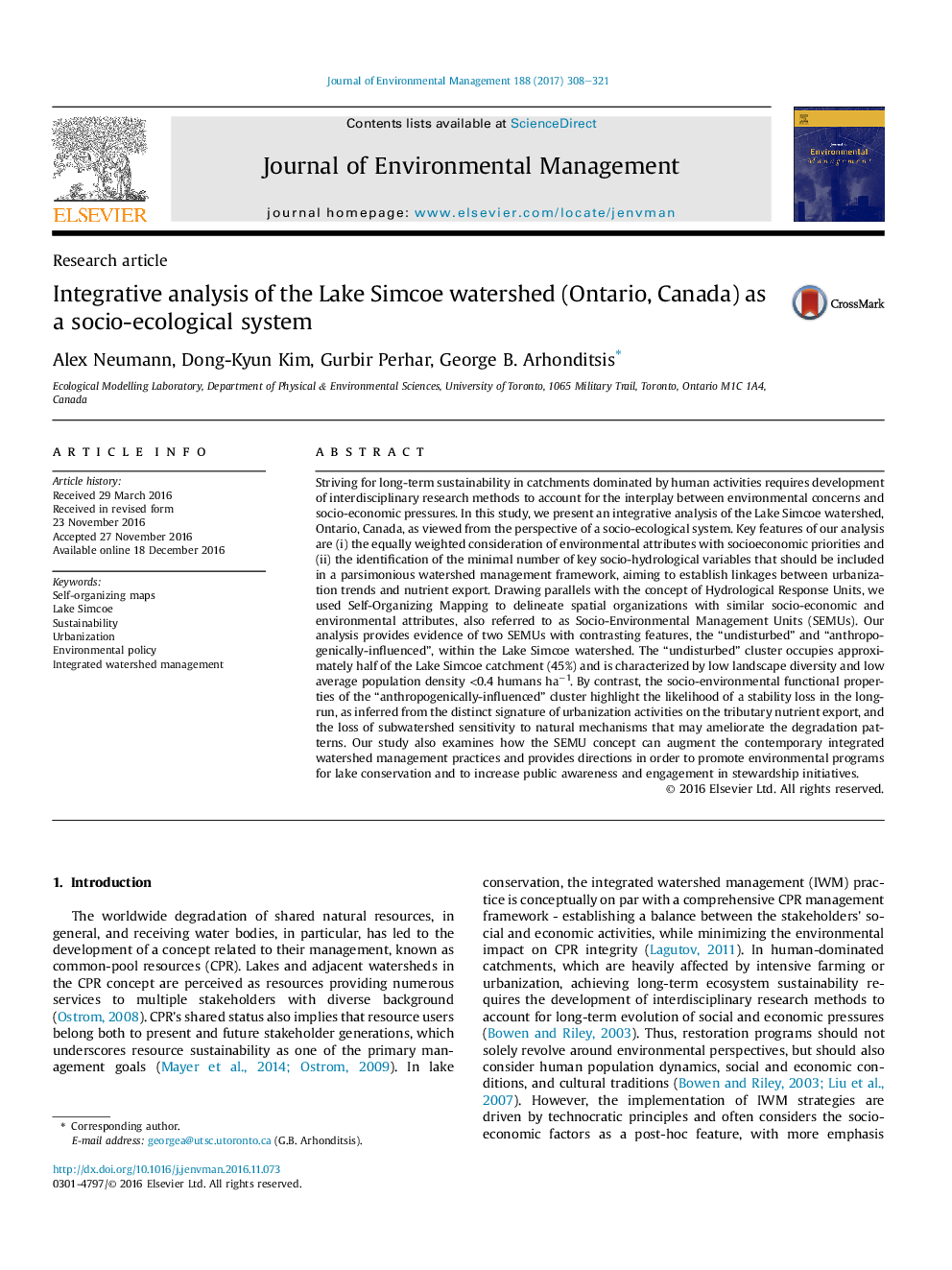| Article ID | Journal | Published Year | Pages | File Type |
|---|---|---|---|---|
| 5117148 | Journal of Environmental Management | 2017 | 14 Pages |
Abstract
Striving for long-term sustainability in catchments dominated by human activities requires development of interdisciplinary research methods to account for the interplay between environmental concerns and socio-economic pressures. In this study, we present an integrative analysis of the Lake Simcoe watershed, Ontario, Canada, as viewed from the perspective of a socio-ecological system. Key features of our analysis are (i) the equally weighted consideration of environmental attributes with socioeconomic priorities and (ii) the identification of the minimal number of key socio-hydrological variables that should be included in a parsimonious watershed management framework, aiming to establish linkages between urbanization trends and nutrient export. Drawing parallels with the concept of Hydrological Response Units, we used Self-Organizing Mapping to delineate spatial organizations with similar socio-economic and environmental attributes, also referred to as Socio-Environmental Management Units (SEMUs). Our analysis provides evidence of two SEMUs with contrasting features, the “undisturbed” and “anthropogenically-influenced”, within the Lake Simcoe watershed. The “undisturbed” cluster occupies approximately half of the Lake Simcoe catchment (45%) and is characterized by low landscape diversity and low average population density <0.4 humans haâ1. By contrast, the socio-environmental functional properties of the “anthropogenically-influenced” cluster highlight the likelihood of a stability loss in the long-run, as inferred from the distinct signature of urbanization activities on the tributary nutrient export, and the loss of subwatershed sensitivity to natural mechanisms that may ameliorate the degradation patterns. Our study also examines how the SEMU concept can augment the contemporary integrated watershed management practices and provides directions in order to promote environmental programs for lake conservation and to increase public awareness and engagement in stewardship initiatives.
Keywords
Related Topics
Physical Sciences and Engineering
Energy
Renewable Energy, Sustainability and the Environment
Authors
Alex Neumann, Dong-Kyun Kim, Gurbir Perhar, George B. Arhonditsis,
